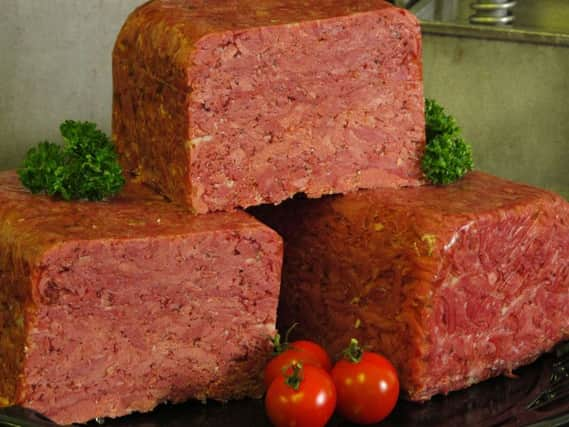Even food serves to remind us of the sacrifices made during the war


Voluntary food rationing was introduced in 1917 and was made compulsory in 1918 for meat, butter, lard and sugar. Surprisingly, in the trenches at the battlefields, soldiers ate remarkably well with a daily consumption of 4,600 meat rich calories.
The main staple was corned or bully beef. Soldiers were advised to pierce the tin before opening them. If it hissed, it had gone off. The other tinned staple was “Maconochie” a pork and bean based meal named after the Aberdeen based manufacturer.
Advertisement
Advertisement
I’ve included a recipe for corned beef this week but not from a tin. The “corned” reference is to the size of salt nuggets used traditionally. They were big like corn kernels. Beef brisket is brined with salt, sugar and spices and then slowly cooked with vegetables. The vegetables are mixed with marmite to make a thick gravy. I know Marmite is a love/hate thing but you won’t detect it through the sauce – it just adds a deep richness. Serve with some spuds and cabbage for a traditional dish, ideal for this time of year.
Although dishes could be bland, cooks on the frontline were encouraged to use nettles, marigolds, sweet docks and wild mushrooms to enhance seasoning. They were careful to avoid food waste. Leftovers were sold as swill to farmers and all the dripping was saved for use in the manufacture of explosives. Biscuits were made traditionally with flour, currants, spices, sugar and fat to sustain the men as they fought.
They were also able to supplement army food with that sent from family and friends at home via a very efficient postal system. One popular recipe was for “Trench Cake” made with currants, flour, sugar, lard, buttermilk, vinegar and baking soda. The vinegar reacted with the baking soda as a raising agent instead of rationed eggs.
Away from the trenches, people at home were encouraged to be thrifty and aware with a series of leaflets entitled “Waste not, want not, economy will win the war”. They were encouraged to forgo bread in favour of potatoes.
Advertisement
Advertisement
During the war there was an unprecedented surplus of two million tonnes of the tuber. The wise words quoted on one pamphlet said: “Potatoes should never be peeled before cooking. You throw away 85 per cent of its flesh forming and vital elements.” We need to apply that philosophy today.
Oats were used to soak up and eke out precious bacon fat. Another popular way of using them was in a traditional Yorkshire Parkin. This is traditionally eaten at Bonfire night in the county but was eaten extensively during the world war due to the fact most of the ingredients were readily available – oats, margarine, ground ginger, treacle and milk.
I’ve included a recipe for a more palatable Parkin using butter and sugar. In the interests of research I tried an original recipe from the “Win-The-War Cookery Book” that turned out like a not so sweet biscuit. But the more palatable recipe I’ve included which is sticky, spicy and tasty is the one you’d be better baking. If you have any stewed rhubarb in the freezer it would be ideal served with a slice of this confection. Or just enjoy with a cup of tea or coffee. When coffee was rationed, wheat bran and treacle were roasted together and the resulting granules soaked in boiling water and strained. Consider that beverage next time you enjoy a freshly brewed cup of coffee.
We take so much for granted nowadays – food, healthcare, freedom of movement and tomorrow we should reflect on the sacrifices made to ensure we have the lifestyles we have become accustomed to.
In a world where credit ensures most people want for nothing it’s worth contemplating on the ethos behind the waste not, want not campaign – “You must ‘make do’ with what you have”.